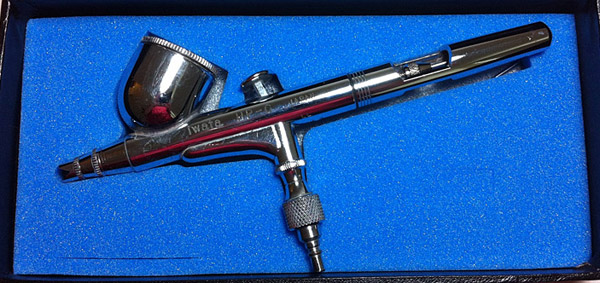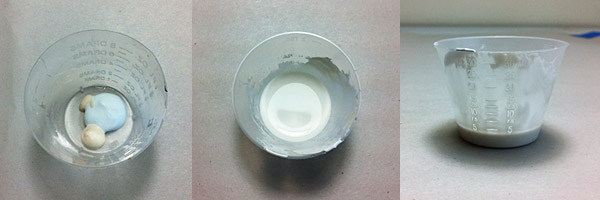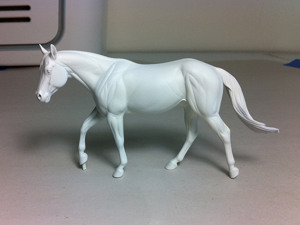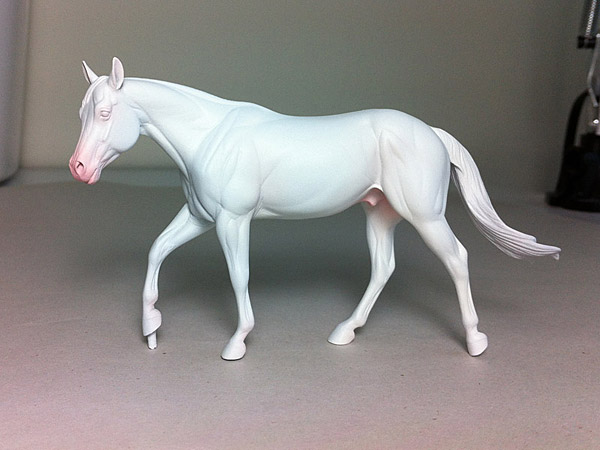Yesterday I prepped my Little Lonestar resin for painting, and let him dry overnight. Today: time to paint!
I'm using an Iwata HP-C airbrush. I've had this airbrush for many, many years, and painted lots of horses with it. Sometimes it's a bit cranky, but it's a reliable workhorse and I expect it may last me forever.

I'm painting with Jo Sonja acrylic gouache. Their soft matte colors used to be quite the rage in the model horse hobby. I've been tempted to try my hand at oil painting a model again because I think oil colors are richer, but there's a lot to be said for the instant gratification of airbrushing.
Since the primer coat is a cool white, I want to warm him up a bit with a slightly warmer white basecoat. I usually achieve this by mixing Titanium White with Unbleached Titanium (left). I also have a tube of "Warm White" (right) which might do. Here's a test of both:

Probably either would work well, but the Warm White looks a bit more yellowish, so I may save it for a palomino or sorrel-colored basecoat. This guy is going to be a paint horse with lots of white markings, so I decided to go with the slightly redder mix on the left.
Obviously tube paints can't be airbrushed; you have to thin them. I suppose water would do just fine, but I've been using Liquitex airbrush medium for years, and am pretty happy with it. I put a fingertip-sized dollop of paint in a small mixing cup, mix the colors together with a regular paintbrush (use one with a 1/4" tip for easier mixing). Then I pour in some of the airbrush medium and stir until it's a milk-like consistency. Thicker (cream-like) liquid results in a more opaque cover; thinner (skim milk?) liquid doesn't cover as well, but it's great for transparent washes. Since this is a base coat, it needs to be thick, so it's a whole milk consistency:

It doesn't take a lot of liquid to thin the small amount of paint. (That's about half a teaspoon in the cup on the right.)
Here's the primed Lonestar before painting (left), and after two coats of the white basecoat (right):
Finally I do another round with a light pink color on his muzzle, ankles, and privates:
Looking good! Now I have to let this dry overnight again, because the next step is to add masking tape where I want the white to stay white. And if you apply mask to paint that's not fully dry, you can end up pulling up paint when you remove the mask.
P.S. The white rod for his front right leg is a bit of acrylic. I have some blue masking tape wrapped around that, and it'll stay there until I'm through painting. When I remove the mask it'll be a nice clear rod. :)






